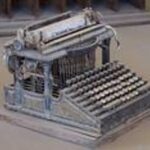In developing writing and argument skills, it is necessary to be able to approach a topic in different ways. A student may find that some methods are more effective than others depending upon the circumstance. The nine patterns of writing are cause and effect, argument, illustration, narration, process analysis, classification, definition, description, and comparison and contrast.
Cause and Effect
A cause and effect paper is going to center around a particular event. From there, the writing is going to tell what happened before the event as well as what happened after. The writer also needs a purpose for writing this assignment. Details of the examples are going to be useful for shaping the argument as well.
Argument
An argument needs to have punch to it in order to be effective. It is an argument and the job of the writer is to persuade the reader to share the same point of view. This writing starts with a strong position on a topic. Evidence should be used and reasons should be given for the position. Another important thing to address in the writing is opposing views.
Illustration
An illustration is a writing pattern which uses examples to show, explain, or prove a point. For this type of writing, there is going to be a main point which the writing is trying to illustrate. The writer does this by giving examples and giving lots of details to support the examples. There should also be enough examples to really reinforce the main point.
Narration
A narration is basically the telling of a story, but it should have some moral or some other reason why it is important. The narration needs to have a main idea which will be supported by the events of the story. A good narration is also going to have plenty of details about all of the events that occurred within the story that’s being told. Another rule for narration is that events should be in the order that they actually happened. The writing shouldn’t skip around in time.
Process Analysis
A process analysis tells others how to do something or how something works. It is going to give all the major steps in the proess and explain each of the steps using lots of details. It’s also important to list the steps in chronological order.
Classification
Classification seeks to understand people or things in some way by putting them into different categories. There has to be a purpose for the sorting. The writer should explain how the categories were organized and give details about the things that are in each one of the categories.
Definition
A definition is going to explain the meaning of a term or concept. The first step in a definition is to let the audience know what is going to be defined. This should be followed by the definition. Examples will allow the definition to be explained more thoroughly. More details will be necessary to make sure that readers understand the examples.
Description
A description is going to describe a topic while giving a general impression of the topic. Examples are going to be used which help shape the readers view of the topic. Sensory details should be used to support the examples. This will make the reader feel like they are actually at the place, or seeing the person or object.
Comparison and Contrast
A comparison and contrast writing is going to have two topics usually. A comparison is going to show the similarities among ideas, situations, people, and things, whereas contrast is going to show the differences. There has to be a reason for the comparison or contrast. There should be several points which are being compared between the two subjects. This type of writing can be organized by using either the point-by-point method or the whole-to-whole.



